#foodforest
Explore tagged Tumblr posts
Photo

What if the Philippines could transform its agricultural landscape through innovative agro-industrial real estate developments? Imagine vertical farms stretching skyward, utilizing every inch of space efficiently while smart farming technologies optimize growth conditions and resource use. How could this revolutionize food security and elevate produce quality for export and local markets? Picture farmers with cutting-edge education programs, state-of-the-art laboratories, advanced technology, and modern equipment. What impact would comprehensive funding initiatives and cold storage facilities have on reducing post-harvest losses and maintaining produce freshness? Can the Philippines become a global leader in sustainable, efficient, and resilient food production by embracing these advancements? This vision promises a future where the agricultural sector thrives, meeting the demands of tomorrow with unprecedented efficiency and quality. How will this transformative journey shape the future of farming in the Philippines?
#agriculture#farming#urbanfarming#organicfarming#agriculturelife#regenerativefarming#verticalfarming#ecofarming#farm#growsomethinggreen#foodforest#farmland#agrilife#foodsecurity#philippines#food#agroindustrial#industry#smartfarming#business
1 note
·
View note
Video
youtube
Welcome to the Arts and Wellness Cafe. Come and join me as we look at the topic 'Fullness', we have art journals to work in, processes, lots of creativity, looking at the food forest and medicinal plants, the effects of dementia and care and lots more to encourage and motivate you.
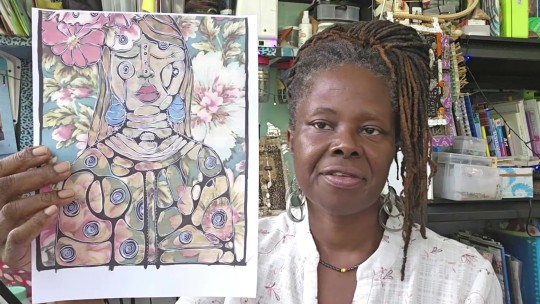
Working in our art journals with background papers and prompts. You can get access to the FREE Papers - on the FREE member tier - https://www.patreon.com/realityarts I have put time stamps in the video so that you can see the different sections if you don't watch it in one go. Please share with someone who may need to hear and stay blessed!
#youtube#memories#memoriesofchildhood#christmas#remeniscing#fullness#realityarts#dementia#caregiving#artsandwellness#foodforest#creativity
0 notes
Link
Nestled amidst the breathtaking beauty of the Dolomites, Alta Badia isn't just a haven for skiers and hikers; it's a region passionately committed to sustainable practices. Here, the Ladin people, with their deep love for their land, have woven a philosophy of environmental responsibility into the very fabric of their tourism industry. Let's delve into the inspiring initiatives that make Alta Badia a leader in eco-friendly tourism. ATIRA: Educating for Action ATIRA, meaning "immediately" in Ladin, embodies the proactive approach Alta Badia takes towards sustainability. This series of summer excursions and meetings aims to educate residents and visitors on crucial issues impacting the region's future. Alongside local experts, participants explore the mountains, gaining insights into the delicate ecosystem. From understanding the threat posed by the bark beetle to appreciating the role of mushrooms in the forest's health, ATIRA fosters a sense of responsibility for preserving this natural treasure. Alta Badia Hands-on Engagement: Activities for Every Eco-Warrior Alta Badia offers a variety of activities that go beyond lectures, encouraging active participation in environmental stewardship. The Bark Beetle: A Tree-Eating Insect: This excursion sheds light on the challenges faced by the forest due to the bark beetle infestation. Witnessing the impact firsthand and learning about mitigation strategies empowers participants to become advocates for forest health. Mycology: The Forest Through the Eyes of a Mushroom: This fascinating walk, led by a passionate mycologist, unveils the ecological and medicinal significance of mushrooms. You'll discover how these seemingly simple organisms play a vital role in the forest's well-being. Mowing the Mountain Meadows: Embark on a journey with a young Ladin farmer, learning the art and science of mowing. Witness the traditional techniques used to maintain the meadows and understand the ecological importance of this practice. The tour concludes with a visit to a barn and hayloft, offering a glimpse into the life of a mountain farmer. Alta Badia Eco-Hiker: This initiative tackles the problem of littering on hiking trails. Equipped with gloves and bio-bags, participants actively contribute by collecting waste left behind, ensuring a cleaner environment for everyone. The experience culminates in a picnic, a token of appreciation for their environmental commitment. Renasciüda: Rebirthing the Forest The devastating storm Vaia in 2018 left scars on the landscape. Renasciüda, meaning "rebirth" in Ladin, signifies Alta Badia's unwavering spirit. This annual event allows anyone to participate in replanting trees near the Campolongo Pass, actively contributing to restoring the affected areas. Carless: Encouraging Sustainable Transportation The Carless campaign incentivizes tourists to explore the region without their cars. Upon arrival, guests can hand in their car keys, receiving a benefit card offering discounts on taxi services, excursions, and entry to local attractions. This not only reduces traffic congestion but also promotes a greener way of exploring the area. Immersing Yourself in Nature: Food Forests and Green Mobility Alta Badia is fostering innovative projects to further enhance its eco-friendly approach. Food Forest: This unique concept involves creating a self-sustaining ecosystem where trees, shrubs, and medicinal plants grow together. Visitors can take self-guided tours through the Masisti forest at the Campolongo Pass, learning about the various species while enjoying the beauty of nature. Green Mobility: Alta Badia prioritizes reducing CO2 emissions from traffic. The summer opening of lifts encourages sustainable transportation by allowing exploration of the mountains car-free. Additionally, e-bike sharing allows for effortless exploration of the region, reaching even the Movimënt parks at an altitude of 2,000 meters. Conserving Every Drop: The Importance of Water Alta Badia promotes responsible water consumption by discouraging the use of plastic bottles. They encourage guests to utilize tap and fountain water, offering refillable branded bottles to minimize environmental impact. Beyond Green: A Holistic Approach to Sustainability Sustainability in Alta Badia extends beyond environmental concerns. Their GSTC certification highlights their commitment to three other pillars: Socio-Economic Sustainability: By involving local producers and farmers in tourism initiatives, such as farm breakfasts and cooking courses, Alta Badia strengthens the local economy and community spirit. Cultural Sustainability: The "Nos Ladins-We Ladins" events offer visitors the opportunity to connect with Ladin culture through authentic experiences, fostering cultural appreciation and preservation. Sustainable Management: An internal "green team" works tirelessly on implementing sustainable practices throughout the region. This commitment ensures long-term environmental and cultural well-being.
#AltaBadia#ATIRA#biking#Carless#culturalimmersion#Dolomites#EcoFriendlyActivities#Ecotourism#FoodForest#greenmobility#hiking#LadinCulture#natureexploration#Renasciüda#ResponsibleTravel#ResponsibleWaterConsumption#sustainabletourism
0 notes
Text
Foodforest revolution
youtube
2 notes
·
View notes
Text
Solarpunk Cities vs Solarpunk Villages

One of those internal contradictions of Solarpunk is, that Solarpunk loves at ones a very urban aesthetic, while also kinda loving the idea of rural living - just without all the rural people out there right now.
If you look at Solarpunk art, yes, you will see some art with skyscrapers overgrown with trees (that again, would not be happy on that skyscraper, do not do that to the poor tree!), a lot of art also shows small settlements surrounded by fields and such. Classical rural settings.
Now, when I posted a while ago about including rural living people into leftist causes, a lot of folks got quite angry with me over it. Because according to quite a lot of tumblrites, obviously everyone who lives rurally is inherently racist, sexist, and queerphobic, other than the queer people who had the bad luck being born rurally and cannot move. But everyone else! And because a lot of leftists have not quite understood the entire "class solidarity" thing, the general thought in those cases is not to talk to people, but to just "fuck them and leave them to die".
I will leave my disagreement with this on: "Yeah, actually, class solidarity is super important. Read up on it" for now, because I want to talk about mainly the advantages and disadvantages on either form of building a solarpunk society.
Cities have one major advantage: In a lot of ways they are a whole lot more sustainable. Which makes sense, if you think about it. Basically, in a city, a whole lot of people are living closer together, so building the infrastructure is just so much easier. You need so much less of everything to provide people who live in multi-household buildings with water, eletrcitity, heating and internet. Because you basically just need one accesspoint for everything to the building. And general in a city you will have a lot more multi-household buildings.
Even without those though: Population density is a lot stronger in cities. Duh. So even if everyone was living in a single-household home (which is not really the Solarpunk ideal) those are closer together and hence you still need less material and power to provide those things.
It is also easier to provide other types of infrastructure, such as schools, markets, and hospitals. Even stuff just like abilities to connect with other folks... It is just easier to do in a city than in a rural area.
However, a lot of Solarpunk is also about empowering people to grow their own food and such and be more self-sufficient. And this, obviously, becomes a lot easier if the people live in a less densely populated area.
Generally: Once you go out of the city - no matter how much you design the city planning around creating enough green spaces and such - you just will be closer to nature. It is a simple fact. You can more easily interact with nature, can more easily put out stuff like animals. And obviously it is easier to grow and cultivate all sorts of produce.
Don't get me wrong: Yes, we absolutely can create food forests in cities - but still, there is a lot more room in rural areas to cultivate food.
See, the main thing with Solarpunk cities is, that they still will not be fully self-sustainable. Yes, absolutely, we can cultivate some food in greenhouses, on rooftops and in foodforests - but it will not be enough to feed an entire city. Meaning: There will be people in rural areas, to grow and cultivate food.
Mind you, ideally we will absolutely bring down meat consumption. While I am not a big fan of the idea of a fully vegan future (for reasons I went into multiple times: some people can for chronic sicknesses, or disabilities not go fully vegan, and yes, I personally also see value in cultural stuff that involves meat), I do think we will eventually reduce meat consumption a lot. So we will need a lot less room to grow stuff - because right now a lot of vegetables (especially corn) are consumed by livestock. So reducing livestock will reduce the need for produce in many regards.
We can because of this rewild a lot of area that currently is used to grow corn and such.
Still. One way or another: some people will need to farm. The question is just how many. Because yes, we can automate a whole lot of stuff - but that brings us back to the good old question of us being alienated from our food. Sure, if we cultivate some food where people are, this might be better... But we definitely can philosophically discuss whether it would not be better for us as a species to always cultivate our own food. Especially as we know that food that is grown in mixed fields and under concepts of permacultre are a lot harder to harvest automatically - but much better for the environment.
So, some people will need to be out there for farmwork. The question just remains: How many?
Because exiling some folks from society to grow food and isolate them seems to be rather bad in taste too, right?
And there definitely is some arguments for some people living more rurally. It just is harder to create as a context.
And sure, if we ever got to the Solarpunk future, chances are, things will come to be naturally. However, it is still worth thinking about it and evaluating it.
#solarpunk#lunarpunk#rural living#urban living#urban landscape#city#village life#agrarian#agriculture#food forest#sustainable living#sustainable farming#infrastructure#city planning
100 notes
·
View notes
Text
0 notes
Text
This is Why Permaculture is a Step in the Right Direction #ecosystem #foodforest #conservation
This is Why Permaculture is a Step in the Right Direction #ecosystem #foodforest #conservation https://www.youtube.com/watch?v=5ayZIdQNA-s A Mini Community Food Project With BIG Environmental Benefits Food forests are unique permaculture forest ecosystems with an abundance of edible plants and trees. These spaces improve biodiversity, carbon sequestration, climate change mitigation, and habitat fragmentation, and offer educational and mental health benefits. These are also important projects for food security and food sovereignty and offer an alternative to traditional agriculture in some cases #ecosystem #gardening #naturalhabitat #tree #forest #biodiversity #conservation #agriculture #farming #food #carbon #climatechange ⚠️Disclaimer: I do not accept any liability for any loss or damage incurred from you acting or not acting as a result of watching any of my publications. You acknowledge that you use the information I provide at your own risk. Do your research. Copyright Notice: This video and my YouTube channel contain dialogue, music, and images that are the property of David Bysouth. You are authorized to share the video link and channel and embed this video in your website or others as long as a link back to my YouTube channel is provided. © David Bysouth via David Bysouth - PhD https://www.youtube.com/channel/UC3ZyPtFAKgvbn7bkp2x7iHg June 30, 2024 at 06:00PM
#conservationvlogs#biodiversityexplorations#natureadventures#environmentaleducation#eco-friendlylifestyletips#environmentaladvocacy#climateactioninitiatives
0 notes
Text
Montag, 08.01.24 Luz
Heute besichtigen wir den Waldgarten von Sandra und Michael (Foodforest Design). Ihr Waldgarten ist erst ein Jahr alt und macht bereits viel her. Auf einem 5.000 qm großem Grundstück haben sie 300 Bäume gepflanzt. Sogar eine kleine Kokosnuss wächst dort. Dazwischen gibt's Gemüsebeete.
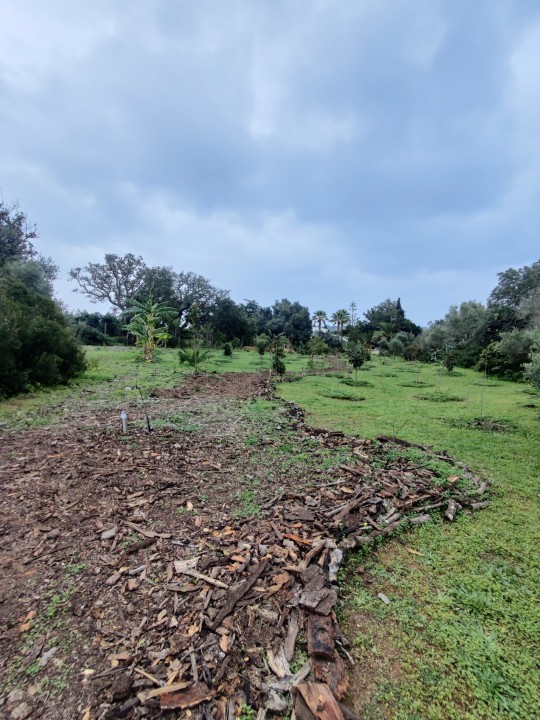
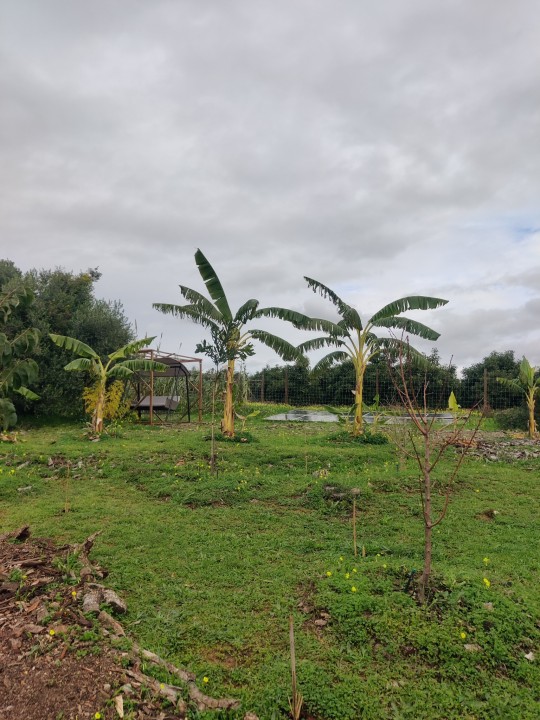
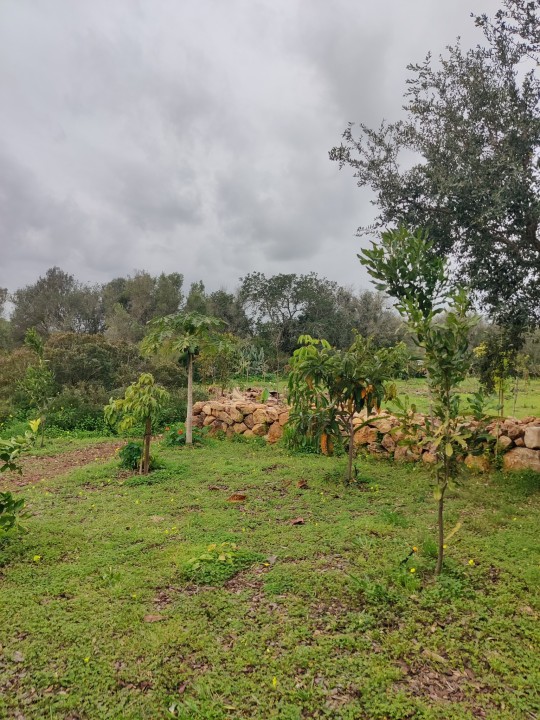
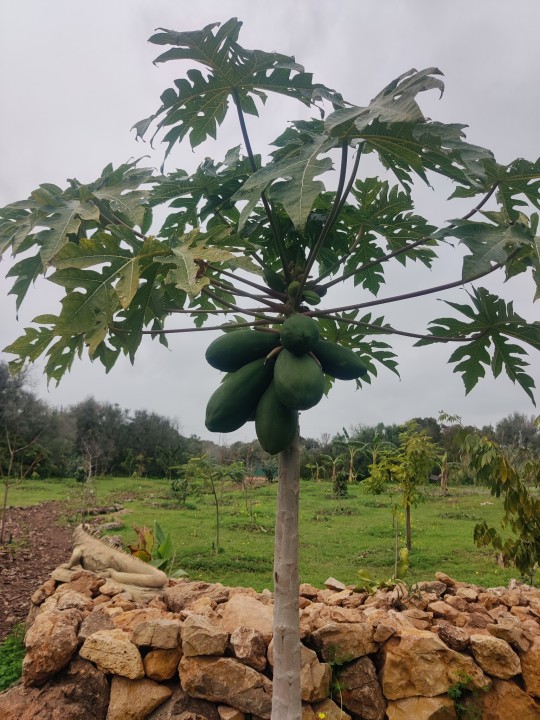
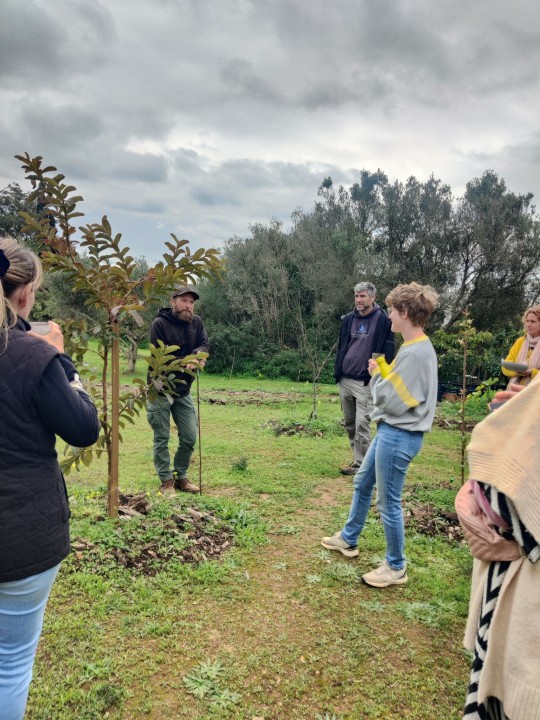
Wir lernen etwas über die Bodenaufbereitung (mulchen, mulchen, mulchen), den Wasserhaushalt, dem natürlichen Düngen mit Urin, wozu Pflanzenkohle genutzt wird, wozu es Teiche braucht und vieles mehr.
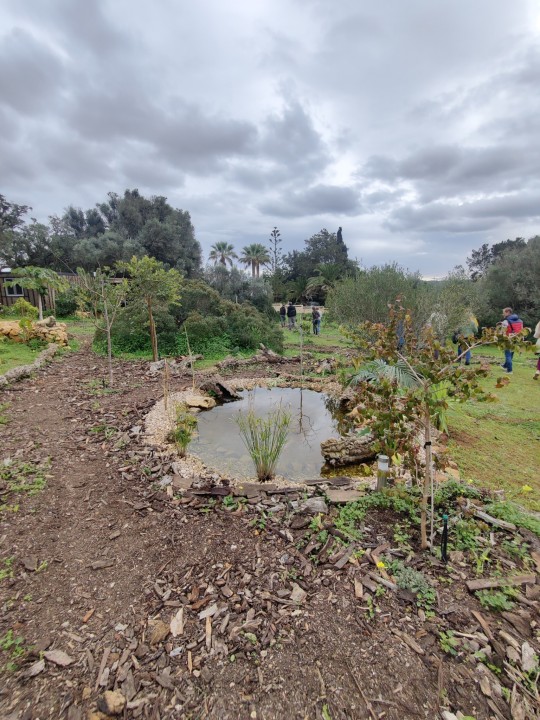
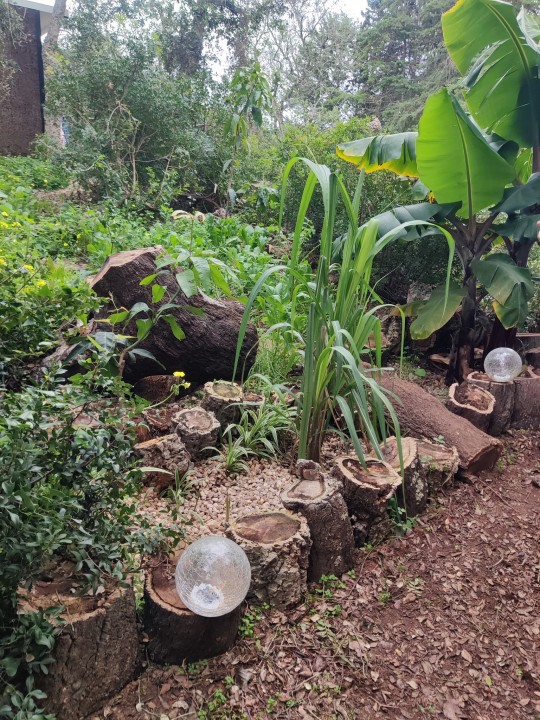
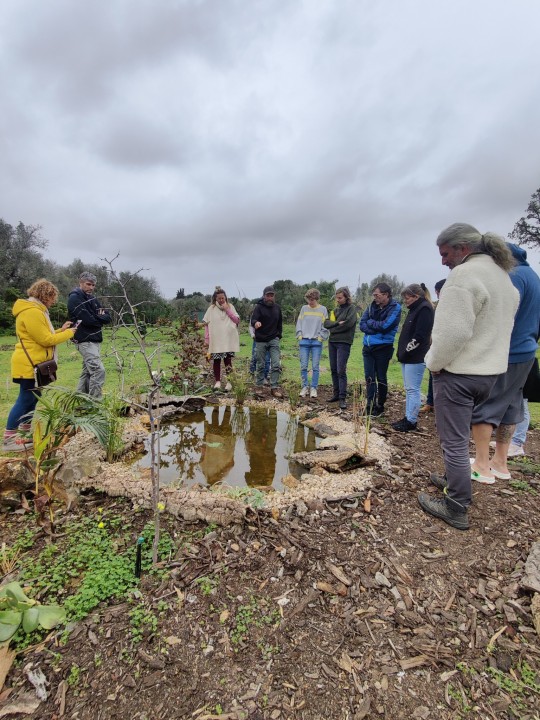
0 notes
Text
Forest Gardens: Create a Food Forest in Your Backyard
If you live somewhere with space for growing food, a forest garden or food forest is one of the best ways to grow it.
What is a Forest Garden?
A forest garden is a garden designed to mimic the interrelationships that exist in the natural environment. As your forest garden gets established it becomes more and more hands-off except for harvesting, creating less work for you and letting nature take the reins.
When you intentionally group and place plants like wild trees, shrubs, ground-cover, and vines together they'll grow symbiotically, requiring no additional fertilizer, water, pest/disease control. This grouping of mutually beneficial plants is called a guild. When you put lots of guilds together you get a forest garden.
A well-known example of a guild is the three sisters, an Indigenous method of growing corn, beans, and squash together in the same mound. The corn grows tall, providing shade for the squash and a trellis for the beans to climb. The beans fix nitrogen in the soil to fertilize the corn and squash. The squash covers the ground, creating a living mulch for the corn and beans. The plants fulfill each other's needs and grow better together than they would separately.
There are infinite ways to create guilds and in turn forest gardens! Fruit tree guilds like these are a great example.
Designing a Forest Garden
You don't need a space the size of an actual forest to grow a forest garden. Even a small bit of land can hold food producing plants. The key is finding a group of plants that all benefit each other so you can create guilds even in small spaces.
Here's a basic guideline to creating a guild:
For every large/tall food producing plant/shrub/tree, include a nitrogen fixing plant/shrub/tree, a plant that attracts beneficial insects, a plant with a deep tap root to pull up nutrients from the soil, and a ground cover to create a living mulch.
This is a step up from the three sisters, and it can go even further! Forest gardens can be as huge or as small as you want them to be.
Consider the sun. All of your plants will need adequate sunlight, so plant your tallest plants to the north, then moving south plant your smaller trees, vines, herbs, and ground covers.
Figuring out What to Grow in Your Food Forest
So many plants can thrive in a food forest. What you grow is going to need to be tailored to your space, your needs, and your climate.
Both annuals and perennials work well, but perennials are often preferred.
Grow plants native to your area. Learn your growing zone and research your native plants. If you live in the United States this tool from the National Wildlife Federation will show you your native plants by typing in your zip code.
If possible, connect with other permaculturists in your area or growing zone (either on social media or in person!) and learn what they're growing and how they have it organized.
Keep on reading and learning! Books, classes, websites, blogs, YouTube videos, there's so many great resources out there. Gaia's Garden by Toby Hemingway and Edible Forest Gardens by Dave Jacke and Eric Toensmeier are considered some of the best books on the subject. I've found lots of helpful books on free websites like Z Library and the Internet Archives!
Creating a food forest takes a lot of planning, but the end result is so worth it. Better for the land, easier on us, and we still get incredible harvests. Happy growing!🌱
Source
#permaculture#food forest#forest garden#foodforest#forestgardening#backyard food forest#gardening#organic gardening#solarpunk#sustainable farming
1K notes
·
View notes
Photo
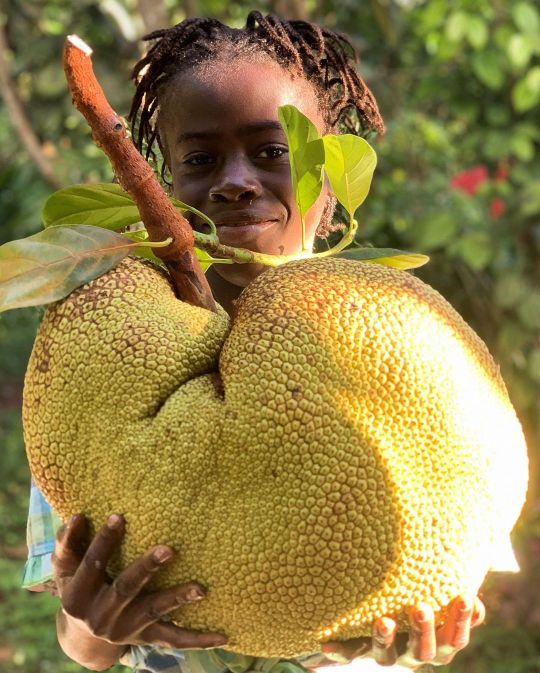
Jackfruit is most definitely the king of fruits. So abundant and so versatile! #growninhaiti #jackfruit #harvest #community #sharingiscaring #foodsecurity #abundance #regenerativefoodsystems #haiti #ayiti #reforestation #foodforest #agroforestry #organic #nogmos #nopesticides #noherbicides https://www.instagram.com/p/ClHDpteOplF/?igshid=NGJjMDIxMWI=
#growninhaiti#jackfruit#harvest#community#sharingiscaring#foodsecurity#abundance#regenerativefoodsystems#haiti#ayiti#reforestation#foodforest#agroforestry#organic#nogmos#nopesticides#noherbicides
145 notes
·
View notes
Text
If we want to reduce the heat we need to plant way more trees.
They provide shade, food, and effectively cool down the environment because they don’t hold heat like asphalt, pavement, bricks, traditional roofs, etc.
Trees provide habitat for birds which eat immense amounts of insects including caterpillars, mosquitos and flies, while also fertilizing the soil with their manure.
Some trees fix nitrogen into the ground making the soil more fertile in a natural and effortless and free way, just by standing there.
More trees also means more wood.
Trees can be used to create food forests, which in turn reduce the chances of forest fires because with well-managed living crops growing in the soil under the trees they hold more moisture and don’t catch on fire so easily.
You can prune them at will to give the lower crops the perfect amount of light and shade. With the pruning we can create mulch, (fire)wood, and wood chips mixed with mycelium for making walkingpaths that grow mushrooms.
Add a small amount of chickens per large area and you have extra fertilization and excellent pest control as they eat the insects that also like to eat vegetables. Include ducks and they will get rid of the slugs too.
Tree roots also hold the soil together, preventing soil erosion while providing excellent drainage so that when it rains, the water can penetrate the soil faster and deeper, effectively absorbing floods as well.
#permaculture#sustainable farming#garden#gardening#organic gardening#food forest#foodforest#biodiversity#regenerative farming#regenerative agriculture#regenerative ag#regenerative gardening#organic agriculture#bio#organic#how to prevent forest fires#how to make more food#how to create more food#foodshortages#plant more trees#trees#planting trees
208 notes
·
View notes
Text
youtube
My friend sent this link to me! It's really interesting on the principles of syntropic food farming, similar to food forest concepts. The aims are to improve biodiversity and maximise qualities of different plants in synchrony to best effect. I'll read up more later and write up more of an essay, but for now, this video is super interesting!
#garden#gardening#food forest#foodforest#forest garden#biodiversity#subtropical#Youtube#permaculture
7 notes
·
View notes
Text
Harvest update!
#OrganicGardeners, what are you harvesting these days? Here’s what my garden produces, by month. March: thyme, rosemary, lemon balm. April: lacinato (”dinosaur”) kale, Swiss chard. May: Broccolini and its leaves, cauliflower and its leaves, butter lettuce. June: Strawberries, early raspberries, early blueberries, peaches. July: Apricot, nectarines, mid-season blueberries, miniature plums, zucchini. August: Yellow squash, crookneck, red cherry tomatoes, orange cherry tomatoes, blackberries. September: Roma tomatoes, beefsteak tomatoes, late-season raspberries, late-season blueberries, some varieties of apples, pears, Asian pears. October: Figs, some varieties of apples, pears, Asian pears. I don’t yet know if I will plant any fall crops or overwinter any crops, though kale and chard will likely just come up in my yard.
2 notes
·
View notes
Text
Growing foodforests
youtube
Great progress
1 note
·
View note
Photo
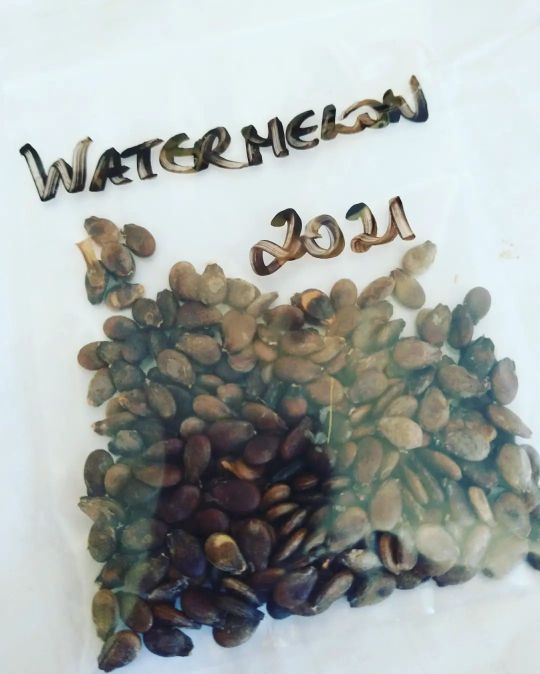
I really hope you all are taking your #seedsaving a bit more seriously this year! #bethesolution #dosomethingaboutit #selfsufficiency #watermelon #watermelonseeds #selfreliance #selfsustenance #organic #vegan #vegetarian #healthy #heirloomseeds #permaculture #foodforest #seeds #melon #growingfood #gardening #beprepared #homesteading * Subscribe to #cookingwithkimberly - http://cookingwithkimberly.com #webchefkimberly #cooking https://www.instagram.com/p/CTfSgqflrFf/?utm_medium=tumblr
#seedsaving#bethesolution#dosomethingaboutit#selfsufficiency#watermelon#watermelonseeds#selfreliance#selfsustenance#organic#vegan#vegetarian#healthy#heirloomseeds#permaculture#foodforest#seeds#melon#growingfood#gardening#beprepared#homesteading#cookingwithkimberly#webchefkimberly#cooking
26 notes
·
View notes